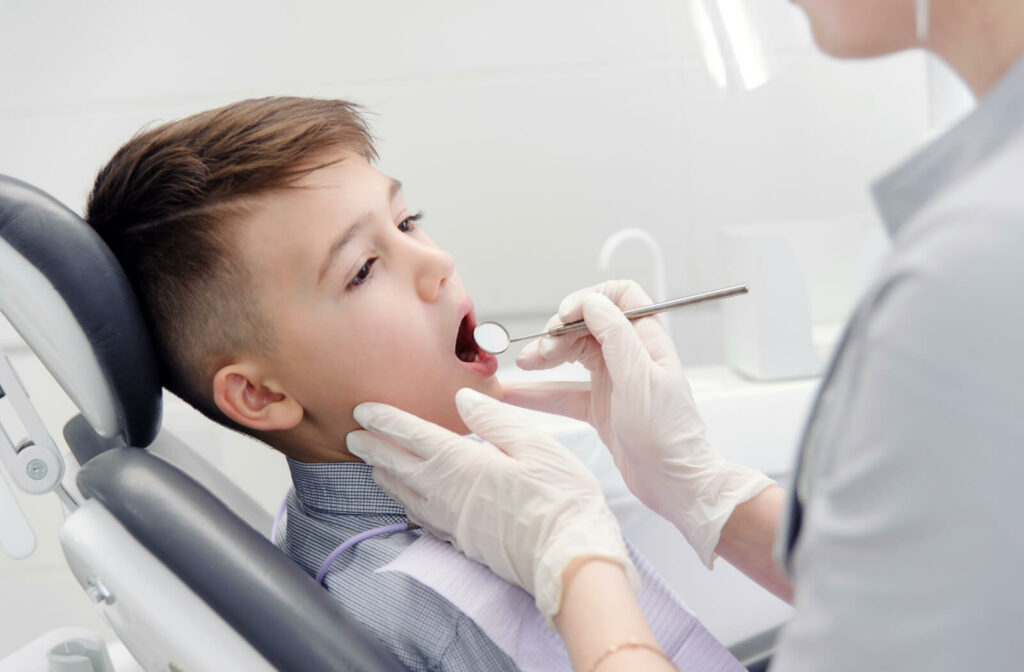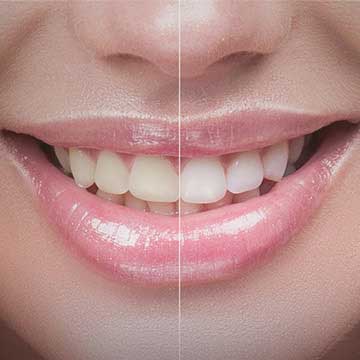As a parent, you strive to ensure the well-being of your child. And when it comes to your child’s oral health, preventing cavities is likely a top priority. Dental sealants are a preventive dental care option that can reduce the risk of tooth decay in kids.
What Are Dental Sealants?
Dental sealants are thin, protective coatings applied to the chewing surfaces of molars and premolars (the back teeth). These teeth have fissures and grooves that are susceptible to trapping food particles and bacteria, making them more prone to cavities.
Dental sealants can effectively seal off these vulnerable areas, acting as a barrier against the tooth-decaying effects of plaque and bacteria.
How Do Dental Sealants Work?
Dental sealant application is a fairly straightforward and painless process. It’s usually performed by a dentist or dental hygienist and completed in a single visit.
The procedure includes:
- Cleaning: The dentist will clean the tooth’s surface to remove debris or plaque.
- Isolation: The tooth is isolated using cotton rolls to keep it dry during application.
- Etching: A mild acid solution is applied to the tooth’s surface to create a rough texture to help the sealant bond effectively.
- Rinsing and drying: The acid is rinsed off, and the tooth is dried thoroughly.
- Sealant application: The dental sealant is carefully painted on the tooth’s grooves and fissures.
- Curing: Some sealants are light-cured, using a special light to harden the material and ensure it adheres to the tooth surface properly.
Importance of Early Intervention
Early intervention is vital in preventing cavities and maintaining optimal oral health for your child. Children usually develop their first permanent molars around age 6, with the second set appearing around the age of 12. Applying dental sealants when these molars erupt can protect the teeth during their most vulnerable stages and significantly reduce the likelihood of cavities.
Regular dental visits can also promote a positive relationship with oral health professionals and establish good dental habits early on.
Benefits of Dental Sealants
Dental sealants can be a safe and effective method of preventive dental care. They offer a long-lasting and non-invasive option for supporting your child’s oral health. They offer benefits such as:
- Cavity prevention: By creating a protective shield over vulnerable areas of your child’s teeth, sealants can reduce the risk of tooth decay.
- Painless and non-invasive: Dental sealant application doesn’t involve drilling or removing tooth structures. It’s an easy and non-invasive procedure, making it ideal for children anxious about dental visits.
- Long-lasting protection: Dental sealants can last several years with proper care and maintenance. Regular dental check-ups and good oral hygiene habits can help ensure their effectiveness and longevity.
- Cost-effective: Investing in dental sealants is a cost-effective approach to preventive dental care. Sealants are a wise investment in your child’s oral health compared to the cost of treating cavities.
- Boost self-confidence: Dental sealants can help maintain a bright, healthy smile.
Other Ways to Prevent Cavities
While dental sealants are an excellent preventive measure for cavity protection, there are other steps parents can take to ensure their child’s oral health remains in optimal condition. By incorporating these measures into your child’s daily routine, you can help provide comprehensive care for your child’s teeth and build healthy habits that last a lifetime.
Fluoride Dental Care Products
Fluoride is a naturally-occurring mineral that strengthens tooth enamel and helps prevent tooth decay. Using fluoride toothpaste when brushing their teeth twice daily can benefit kids.
Additionally, some communities add fluoride to public water sources, contributing to cavity prevention. Drinking fluoridated water helps protect teeth from the inside out, making them more resistant to cavity-causing acid attacks.
Proper Brushing Technique
Teaching your child the correct brushing technique is essential for effective plaque removal and cavity prevention.
As a parent, you should guide your child on how to brush all surfaces of their teeth thoroughly, including the back molars and tongue. Encourage them to brush for at least 2 minutes twice per day and to use a gentle circular motion to ensure optimal cleaning. We recommend assisting with brushing and flossing until your child can tie their shoes on their own.
Flossing
Flossing removes plaque and food particles between teeth and under the gumline. Parents can start flossing their children’s teeth as soon as 2 teeth touch each other. As children grow older and more capable, they can gradually take over the responsibility of flossing their teeth.
Balanced Diet
A balanced diet is essential not only for overall health but also for dental health. Limiting sugary snacks and drinks can significantly reduce the risk of cavities. Instead, encourage your child to consume tooth-friendly foods like fruits, vegetables, dairy products, and lean proteins.
Regular Dental Check-Ups
Regular dental check-ups are crucial for monitoring oral health and identifying potential issues early on. Dentists can provide professional cleanings and offer valuable guidance on maintaining optimal oral hygiene at home.
Leading by Example
Children often learn by observing their parents’ behaviour. By demonstrating good oral hygiene habits, you can set a positive example for your kids. Bruising and flossing together as a family can help instill good habits.
Find Children’s Dental Care Near You
At Otara Dental, we offer dental care for the whole family. We believe in a preventive approach to children’s oral health, including regular dental exams and treatments like dental sealants. Contact our office to find out how we can support your child’s dental care needs.









